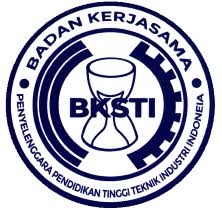Analisis Risiko Keselamatan dan Kesehatan Kerja Kegiatan Bongkar Muat Pupuk
DOI:
https://doi.org/10.30656/intech.v4i2.924Keywords:
Accident, HIRARC, RiskAbstract
A company that serves loading and unloading services which includes demolition and loading of goods carried out in the Pier Port area also has a high potential for workplace accidents. From interviews with safety officers, accidents that occur are still limited to minor accidents such as eye irritation due to dust and irritation to the feet due to fertilizer leaking and about the body of the worker. Based on the workers' side, the potential for workplace accidents can be overwritten by fertilizers, irritation due to leaky fertilizers, respiratory problems from chemical conditions that smell of fertilizers and fall from trucks. This study aims to determine the activities that have the potential for workplace accidents and carry out risk assessments that occur with the HIRARC method. The object of research is a company engaged in loading and unloading operations operating in East Kalimantan. Data collection is done by direct observation by observing the location and activities of workers. Also, by direct interview with the Safety Officer (1 person), Field Coordinator (1 person), Tally Man (1 person), Rager Crane Ship (1 person) and field workers totaling 33 workers. The results of the study obtained risk factors from 8 activities such as placing cranes, preparing loading and unloading equipment, installing slings and hooks to crane hooks, preparing tally man tables on the dockside, workers entering barges, directing transport trucks, fertilizer loading, heading vehicles to leave the dock and 14 potential hazards. From the risk assessment obtained three sources of extreme value hazard, nine sources of hazard that have high-risk values and two sources of hazards that have moderate risk values. Risk control can be done to providing K3 guidance, make good working procedures, and use complete PPE in carrying out loading and unloading activities.Downloads
References
Aryani, I. (2016). Risk Assessment pada Pekerjaan Bongkar Muat Kayu Log (Studi di Pelabuhan Dalam Tanjung Emas Semarang). Fakultas Kesehatan Masyarakat,Universitas Muhammadiyah Semarang.
Kyokai, N. K. (2009). Risk assessment guidelines.
Prasetio, D. B., Aryani, I., & Meikawati, W. (2016). Risk Assessment Pekerjaan Bongkar Muatdi Pelabuhan Nusantara Tanjung Emas Semarang. In The 4th Univesity Research Coloquium (pp. 504–509). STIKES Muhammadiyah Pakijangan.
Ramli, S. (2010). Sistem Manajemen Keselamatan dan Kesehatan Kerja OHSAS 18001. Jakarta: Dian Rakyat.
Saedi, A. M., Thambirajah, J. J., & Pariatamby, A. (2014). A HIRARC model for safety and risk evaluation at a hydroelectric power generation plant. Safety Science, 70, 308–315.
Sanusi, S., Despriadi, A., & Yusdinata, Z. (2017). Analisa Potensi Bahaya dan Risiko Kegiatan Bongkar Muat di Pelabuhan PT Sarana Citranusa Kabil Dengan Metode HIRARC. Jurnal Teknik Ibnu Sina JT-IBSI, 2(1), 119–125.
Suma’mur, P. K. (2000). Keselamatan Kerja dan Pencegahan Kecelakaan. Jakarta: Gunung Agung.
Supriyadi, S., Nalhadi, A., & Rizaal, A. (2015). Identifikasi Bahaya dan Penilaian Risiko K3 pada Tindakan Perawatan & Perbaikan Menggunakan Metode HIRARC (Hazard Identification and Risk Assesment Risk Control) pada PT. X. In Prosiding Seminar Nasional Riset Terapan| SENASSET (pp. 281–286).
Supriyadi, S., & Ramdan, F. (2017). Hazard Identification and Risk Assessment In Boiler Division using Hazard Identification Risk Assessment and Risk Control (HIRARC). Journal of Industrial Hygiene and Occupational Health, 1(2), 161–177.
Downloads
Published
Issue
Section
License
Copyright (c) 2025 Rian Muhamid, Willy Tambunan, Lina Dianati Fatimahhayati

This work is licensed under a Creative Commons Attribution-ShareAlike 4.0 International License.








.png)
.png)
.png)



.png)

.png)
